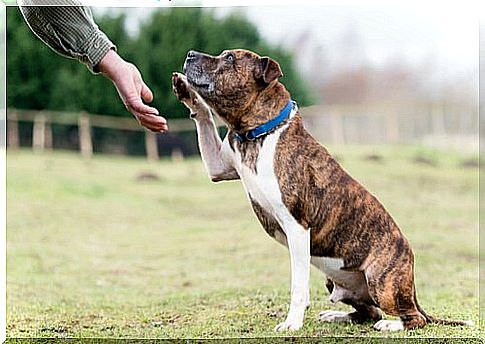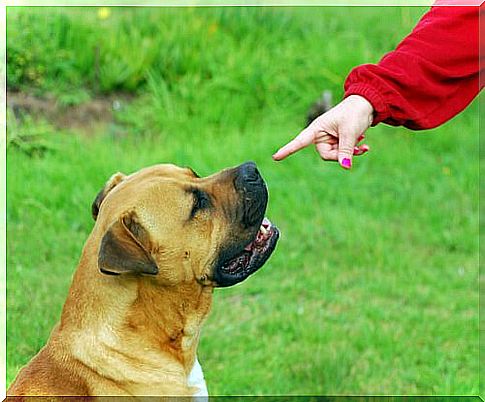Diagnosing Deafness In Dogs

You call your dog, but he doesn’t listen to you? He used to be obedient, but now doesn’t come when you call him? Maybe he has hearing problems. Dogs can also suffer from deafness , so it is important to identify possible symptoms and make an appropriate diagnosis.
It can be a congenital problem, but numbness can also result from infection or trauma. Dogs, like humans, also lose hearing as they age.
Behaviors indicative of deafness or hearing loss in dogs
Often one does not initially realize that there is a hearing impairment, unless it has already become completely deaf. However, if in doubt, you can do an attention test.
Attention Test in Dogs
You can provoke a noise when your dog is not looking. You have to make sure that it is a sound that can only be heard with the sense of hearing, not through air movements or vibrations. For example, you can use keys to make a noise or turn on music. If your furry friend doesn’t respond, you should investigate more closely.
You can also test your dog in their sleep: first call them in a soft voice and gradually get a little louder. If your faithful companion is hard of hearing, he will perceive you as soon as you get a little louder, but if he doesn’t listen to you at all, he could be deaf.

If the dog only hears in one ear, the answer may be confused as it cannot pinpoint the direction the sound is coming from. If you suspect a hearing impairment, take your hairy darling to the vet!
How is deafness diagnosed in dogs?
You can test your dog at home, but the vet will need to make an accurate diagnosis.
The BAER (Brainstem Auditory Evoked Response) hearing test is used for this, an electrical diagnosis in which the right and left ears are tested individually. This allows the dog’s brain activity to be checked for different noises.
In this test, electrodes are attached to the head and small plugs are attached to the ears. Then clicking sounds send stimuli from the hearing to the brain and the answers are checked.
Techniques such as tympanometry are also used to test the hearing ability of the middle ear and the resistance of the eardrum. In addition, the acoustic reflex can also be tested, which checks the response to loud noises.
Otoacoustic emissions (OAE) can also be useful in diagnosing deafness in dogs. The sensory hair cells in the ear are stimulated with sounds to check the answer.
These methods can be used to diagnose deafness in dogs. In this way, it can be determined whether the dog is completely deaf in both ears, only hears on one side or maybe has a hearing loss.
Symptoms of Deafness in Dogs
Several signs are very helpful in discovering hearing disorders:
- When the animal does not wake up to loud noises.
- If it does not react to certain noises as usual: the bell, the sound of the keys before a walk, etc.
- If you call your furry friend and she doesn’t come as usual, this could also be an indication of a hearing disorder. All of these signs indicate something is wrong.
Deafness in puppies
In puppies, certain behaviors can also indicate deafness. When a little pooch bites others hard, it may not hear properly and may not be aware that it is causing the other animal pain.
If the little one does not wake up from noises, but only through movements of his mother or sibling, there could also be congenital deafness.

A deaf or hearing impaired dog can lead a completely normal life. You don’t have to worry too much because he will still enjoy the game, be loving and loyal.
If you adopt a deaf puppy, his upbringing will be no different. He doesn’t hear, but otherwise behaves normally. It is not true that deaf dogs are always in a bad mood or even aggressive.









